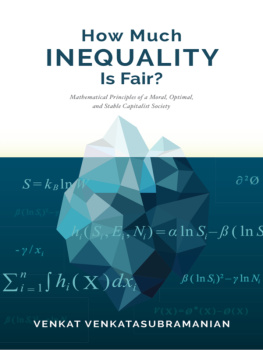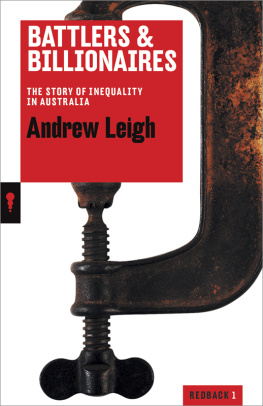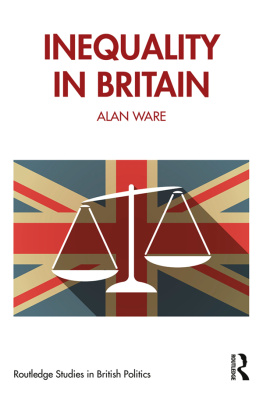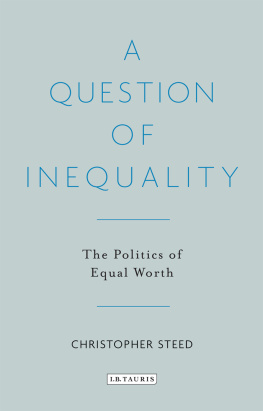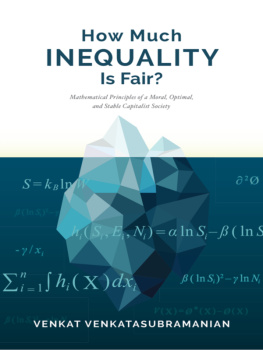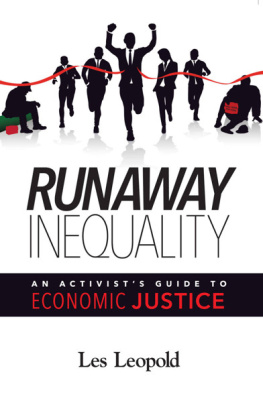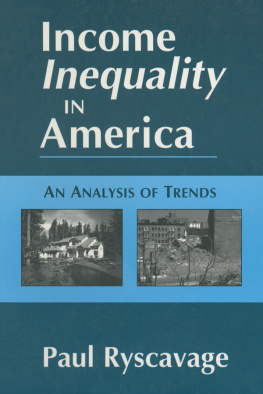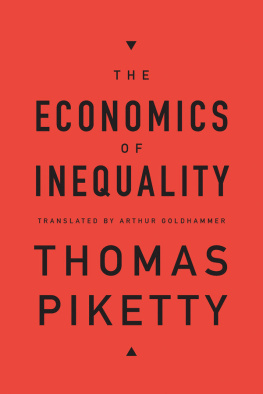Table of Contents
How Much Inequality Is Fair?
How Much Inequality Is Fair?
MATHEMATICAL PRINCIPLES OF A MORAL, OPTIMAL, AND STABLE CAPITALIST SOCIETY
Venkat Venkatasubramanian
Columbia University Press
New York
Columbia University Press
Publishers Since 1893
New York Chichester, West Sussex
cup.columbia.edu
Copyright 2017 Columbia University Press
All rights reserved
E-ISBN 978-0-231-54322-4
Library of Congress Cataloging-in-Publication Data
Names: Venkatasubramanian, Venkataraman, 1955 author.
Title: How much inequality is fair? : mathematical principles of a moral, optimal, and stable capitalist society / Venkat Venkatasubramanian.
Description: New York : Columbia University Press, 2017. | Includes bibliographical references.
Identifiers: LCCN 2016046854 | ISBN 978-0-231-18072-6 (cloth : alk. paper) | ISBN 978-0-231-54322-4 (e-book)
Subjects: LCSH: Income distributionMathematical models. | WealthMathematical models. | EqualityMathematical models. | CapitalismMoral and ethical aspects.
Classification: LCC HB523 .V46 2017 | DDC 330.1/60151dc23
LC record available at https://lccn.loc.gov/2016046854
A Columbia University Press E-book.
CUP would be pleased to hear about your reading experience with this e-book at .
COVER DESIGN:
Fifth Letter
To my wondrous lineage of Acharyas, both spiritual and material, for all their generous prasadhams.
To Edwin T. Jaynes, whose pioneering contributions inspired this work.
To Indu, Govind, and Shriya for their love and support.
Contents
The political problem of mankind is to combine three things: economic efficiency, social justice, and individual liberty.
JOHN MAYNARD KEYNES
Philosophy is written in this grand bookI mean the universewhich stands continually open to our gaze, but it cannot be understood unless one first learns to comprehend the language in which it is written. It is written in the language of mathematics.
GALILEO GALILEI
ONE MIGHT WONDER WHAT a chemical engineer is doing writing a book on income inequality. The importance of the topic is obviousit is the foundational challenge of our time. Like an iceberg looming out of a fog, extreme income inequality has the potential to disrupt the very functioning and stability of our democracy in a fundamental way. But why is a chemical engineer writing about it? This is a reasonable question that deserves an appropriate answer. First, while I am indeed a professor of chemical engineering, by inclination, education, and experience, I am more of a complex systems theorist, interested in understanding fundamental conceptual principles behind the organization and functioning of complex adaptive systems. In particular, I am interested in understanding the design, control, optimization, and risk management issues in self-organized complex adaptive systems. Hence my interest in studying a free-market society from that perspective, even though most of my past contributions have involved addressing such issues in the context of chemical process systems.
Second, my interest in this area started with a question I had asked myself, as a graduate student in chemical engineering, in 1983: What would be a statistical mechanicslike framework for predicting the macroscopic behavior of a large collection of intelligent agents? At that time, I was writing my doctoral thesis, which was on the application of statistical mechanics techniques for the prediction of vapor-liquid properties of polar mixtures. I was also getting interested in artificial intelligence (which I pursued subsequently upon graduation as a postdoctoral researcher in artificial intelligence [AI] at Carnegie Mellon University). So as I thought about AI entities and their behavior, this question arose in my mind.
As I couldnt find the framework I was looking for in the literature at that time, I went about developing one in the following years, not realizing it would take me three decades. Since I thought this was too risky a problem to work on full time, particularly as a young researcher trying to get tenure in chemical engineering and build a career, I diversified my research portfolio by also working on certain problems in process systems engineering. I worked on this question intermittently, whenever my main work permitted, typically over the summer and winter breaks. This question led me to learning about all kinds of topics that chemical engineers typically dont think about, such as economics, finance, game theory, and so on. I was having a lot of fun learning new things and reflecting about this question from different perspectives. I remember thinking, all along, that even if this quest went nowhere, which was a distinct possibility in my mind, the intellectual enjoyment I was having was well worth the wild goose chase.
on this topic taught me how the microstructure of a network is related to its macroscopic properties, and how the environment plays a critical role in determining the optimal balance between efficiency and robustness trade-offs in design and operation. I also developed a good feel for, and insights about, self-organizing dynamics and the emergence of new system-level behaviors, which turned out to be crucial when I started thinking about Adam Smiths invisible hand and the dynamics of the free market five years later.
This work led me, in 2004, to investigate the maximum entropy framework in the design of complex networks, Soon I realized that the true essence of entropy is fairness in a distribution, which got me interested in fairness in income distribution.
This resulted in my papers in 2009
Essentially, my long quest for a statistical mechanicslike framework for rational intelligent agents started in 1983 and ended with our 2015 paper, thirty-two years later. In that paper, however, I had not fully explored the connection between the philosophical theories of human societies and the statistical teleodynamics perspective, even though I had touched upon those connections in my 2009 and 2010 papers. This book is written to address that gap as well as to present all the results from my past papers, and some new results, in a unified conceptual framework.
As a proponent of a new theory, one runs the risk of becoming a casualty of the adage No one believes in a theory except the one who proposed it, and everyone believes in an experiment except the one who performed it! This is further compounded when one works in an interdisciplinary field, as I have, for one runs the risk of not being taken seriously by either camp. Given my theorys transdisciplinary naturespanning all the way from game theory and statistical mechanics to economics and political philosophyit may be ignored and banished to an intellectual no mans land. Political philosophers might discard it, saying it has too much economics and math, and not enough philosophy, to be of relevance to them. On the other hand, economists might reject it because it has too much statistical physics. The physicists, particularly econophysicists, might pay some attention, and for that I am very grateful, but they are not the intended audience of this theory. This book is really meant for economists and sociologists, for the problem I address, namely, distributive justice in a capitalist society, is a central problem in their domains.

